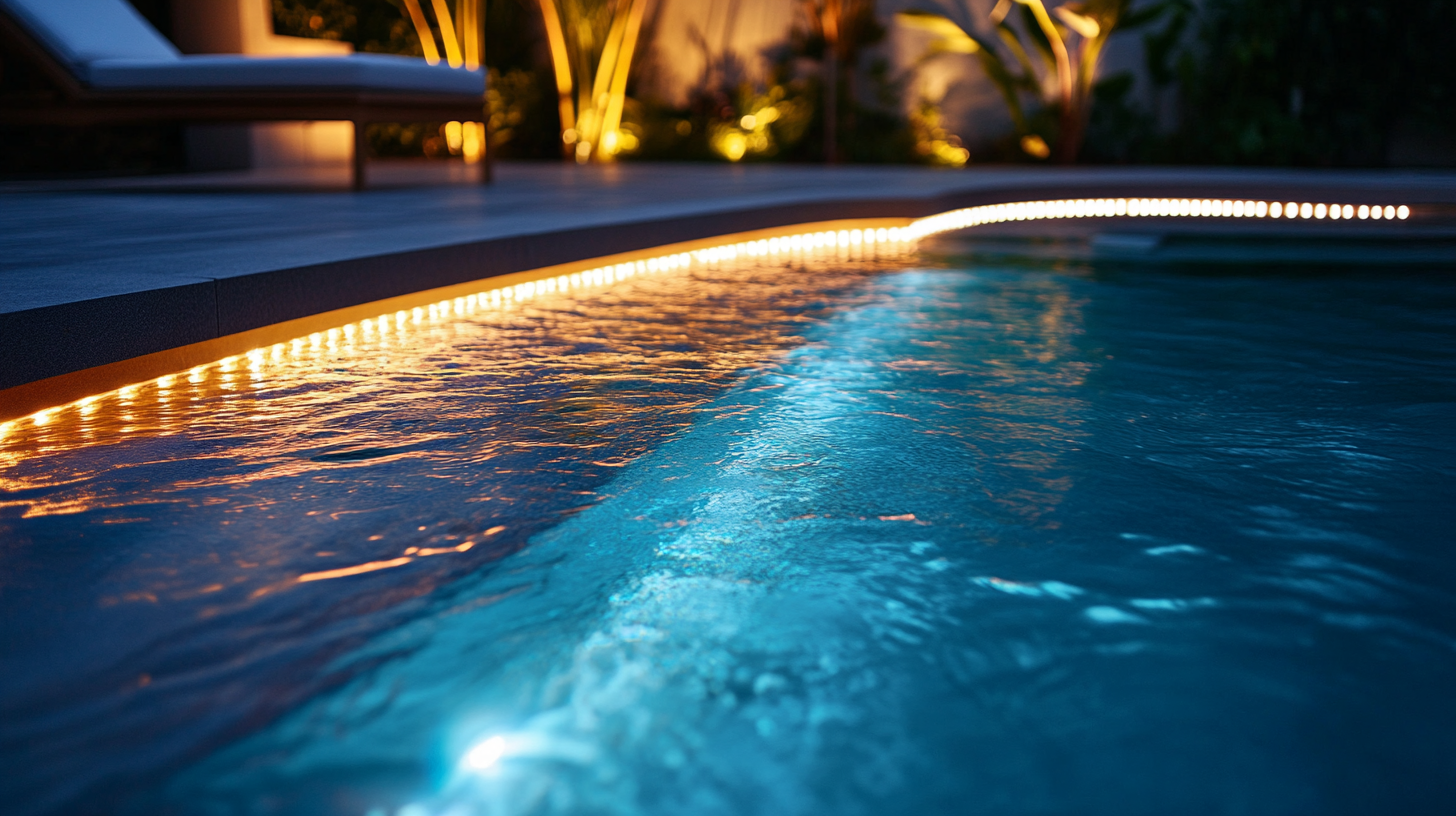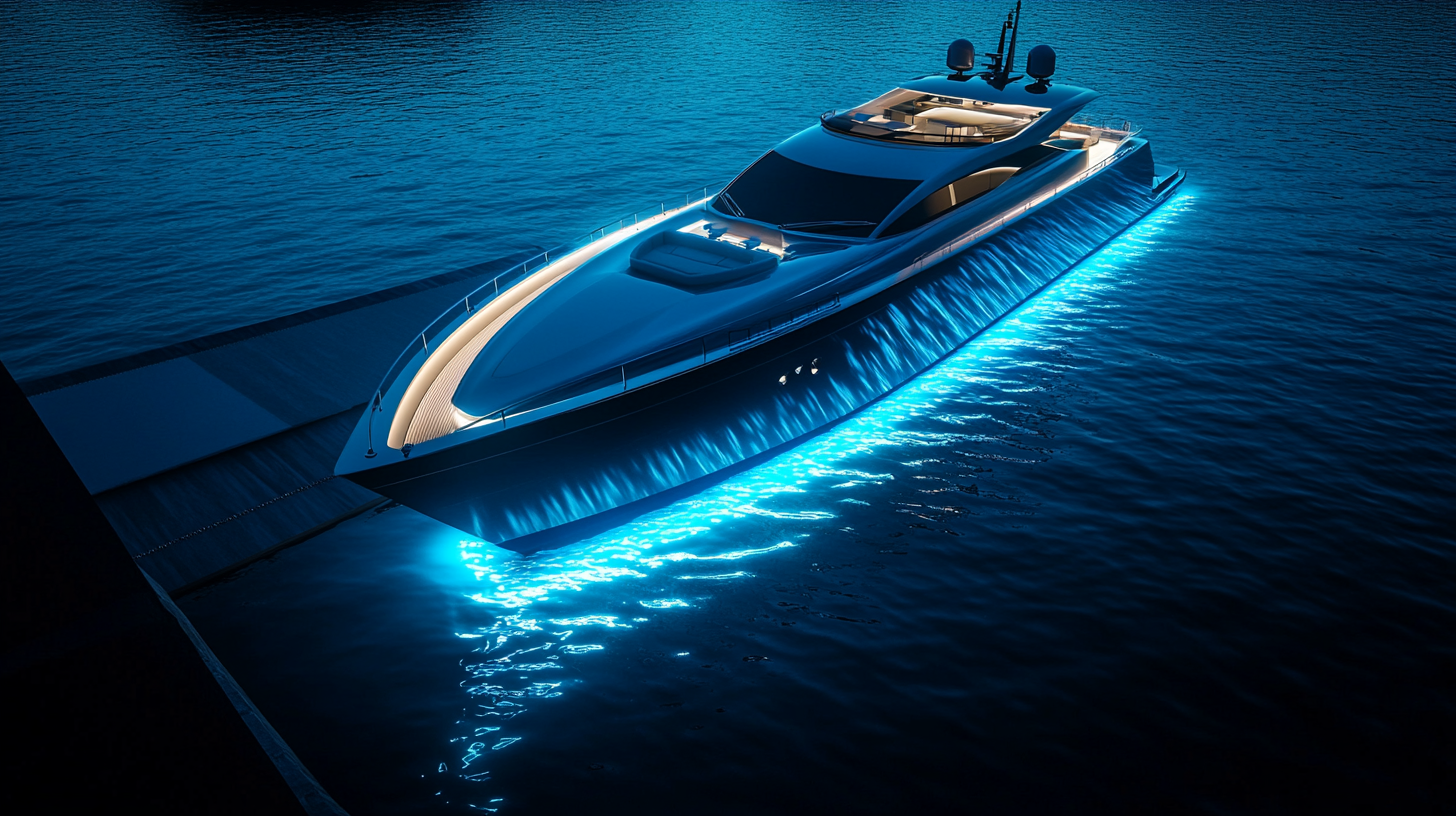Learning about underwater pool light certifications
When it comes to your pool’s ambiance and safety, underwater pool lights play an essential role. But before diving into the world of these glowing features, it’s important to understand why certifications matter. Sure, a sleek design and bright illumination may catch your eye, but without the right certifications, you could be compromising on safety—anything from electrical hazards to poor product durability can easily make waves in your pool experience.
Underwater lights are directly exposed to water and electricity, a combination that can be dangerous without adequately tested and approved products. That’s where proper certifications come in, ensuring that the pool lights you choose meet stringent safety and performance standards. These certifications are your assurance that the product has been tested for resistance to water leaks, electrical threats, and even longevity in harsh pool conditions.
In addition to safety, certified lights offer durability and peace of mind. With certified products, you reduce the risk of unexpected electrical issues that could damage your pool system or even harm swimmers. Certifications help keep you on the safe side while still letting your pool shine in style. So, spending a little extra time to research this aspect is more than worth it.
Common safety standards for underwater lighting
When choosing underwater pool lights, it’s essential to familiarize yourself with the common safety standards that ensure the products you buy are reliable and safe. These standards exist for a good reason: underwater lighting involves the intersection of electricity and water, which, let’s face it, is not a duo you want to mishandle. Fortunately, many international organizations and entities have developed crucial safety benchmarks to maintain user safety and product reliability.
The first and foremost standard you should be aware of is Ingress Protection (IP) ratings. You’ve probably seen them before—those two letters, often followed by two numbers, like “IP68.” These ratings tell you how well the pool lights can resist dust and water. For underwater lights, you’ll want a high IP rating, generally IP68, which signifies that the light can remain fully submerged without sustaining damage. Anything less than that could lead to an unpleasant surprise when water leaks into the lighting fixture, causing malfunction or, worse, an electrical hazard.
Next on the list is the Underwriters Laboratories (UL) certification. Products with UL certification have undergone rigorous testing to ensure they meet strict electrical safety standards. When you see the UL mark on underwater lights, you can rest assured that the fixture has been tested against electric shock risks, something you definitely want to avoid in your pool. A closely related certification is ETL, which offers testing that’s comparable in ensuring electrical safety.
Another safety consideration is ensuring that the lights are manufactured according to the National Electrical Code (NEC), particularly Article 680, which specifically focuses on pools and bodies of water. This set of guidelines dictates the electrical requirements for fixtures installed in wet environments like swimming pools. According to the NEC, underwater installations must follow strict voltage limitations, which are crucial for protecting swimmers from electric shock.
Let’s not forget about the importance of energy-efficient lighting, often proven by certifications such as Energy Star. While you might not immediately link efficiency with safety, energy-efficient lights tend to generate less heat, last longer, and work more effectively, all promoting safer pool environments. Plus, who doesn’t love saving on energy bills while keeping their pool safely lit?
With these safety standards and certifications in mind, choosing the right underwater pool lights becomes less about guesswork and more about thorough, informed decision-making. These industry standards exist to protect you, your family, and your pool, giving you peace of mind as you take that nighttime plunge.
Key certifications to look for when purchasing pool lights
When you’re ready to purchase underwater lights for your pool, the importance of certain certifications can’t be overstated. They’re not just fancy labels; they signify that the products have been thoroughly tested for safety, performance, and quality. But with so many options available, which certifications should you actually care about? Let’s break down some of the most crucial ones to look for.
One of the most widely recognized certifications is Underwriters Laboratories (UL) certification. If a pool light has the UL mark, it means the product has been tested extensively for electrical safety and can be trusted to perform properly in wet environments. Specifically, for underwater lighting, UL focuses on reducing risks associated with electrical shock—a serious concern when electricity and water come into close proximity. Products that have received this certification give you that much-needed assurance that they’re safe to operate around swimmers.
Another critical certification to watch for is the ETL Listed Mark. This certification is provided by Intertek and signifies that the product has met North American safety standards. It’s the UL certification’s cousin, so to speak, offering rigorous testing for electrical safety. If a light has either a UL or ETL mark, you know it’s been put through its paces to verify that it meets stringent safety requirements. Both certifications are typically seen as interchangeable in terms of reliability, so having one or the other is a good sign.
In the realm of water exposure, the Ingress Protection (IP) rating remains a gold standard for underwater lighting. The IP rating provides insight into how well a product is sealed against solids like dust, and more critically, against water. For underwater lighting, an IP68 rating is ideal, as it means the lights are fully waterproof and can handle being submerged for an extended period. Lower IP ratings might work in damp environments, but keep in mind we’re talking about something being fully underwater here. Failing to check for this rating could mean you’re getting a product that won’t survive long-term submersion, leading to unexpected failure or even hazard.
Also, keep an eye out for lights that comply with the National Electrical Code (NEC), especially Article 680, which applies specifically to pools and other bodies of water. NEC compliance ensures that the electrical work involved in setting up your pool lights meets stringent national guidelines, covering everything from the type of wiring used to the allowed voltage levels. Even a high-quality light can pose a danger if installed improperly, which is where NEC compliance comes into play, safeguarding the installation process.
If you are energy-conscious—and let’s face it, who isn’t these days—then the Energy Star certification is worth checking out, too. An Energy Star-rated light can consume significantly less electricity, which not only lowers your energy bills but also helps reduce heat output. Less heat means a longer lifespan for your lights and a reduced risk of overheating-related issues. This doesn’t just mean fewer replacements for you but also less chance of malfunction in an enclosed underwater environment.
Finally, look for any manufacturer-specific certifications that demonstrate additional testing or specialization. For instance, in some cases, lights are specifically tested for compatibility with saltwater or specific chemical treatments used in pools, like chlorine. If your pool uses any of these, ensuring your lights are certified safe for such conditions will further reduce the chances of premature damage or malfunction.
In essence, choosing pool lights with these certifications is like giving your pool a thick layer of insurance against potential mishaps. Not only do certified products perform better, but they’re also safer and give you peace of mind every time you dip into that crystal-clear water. Who knew certifications could turn your pool from merely glowing to confidently sparkling?
Installation guidelines and certified pool lights
Installing certified underwater pool lights requires careful adherence to specific safety guidelines and best practices to ensure both functional performance and the safety of pool users. To start, it’s critical that all electrical components are installed in compliance with the National Electrical Code (NEC) and local building codes. According to the NEC’s Article 680, any light fixture installed underwater must be connected to a ground fault circuit interrupter (GFCI) to avoid electrical shock hazards. Therefore, always check if the breaker handling the pool lights is equipped with this life-saving safety mechanism.
If you’re installing recessed or in-floor lighting, certified products typically come with detailed manufacturer guidelines that must be followed to the letter. For example, lights with an IP68 rating, which are fully waterproof, require proper sealing in their housing to prevent water ingress. Even though these lights are rigorously tested against water exposure, improper installation can compromise their seal, nullifying the benefits of the certification. Always use non-corrosive materials, such as stainless steel or high-quality plastics, for mounting brackets and hardware, especially if installing lights in saltwater pools, to prevent rust and deterioration.
It’s also worth noting that underwater lights certified by organizations like UL or ETL are designed with specific voltage requirements in mind, often low-voltage systems (typically 12V to 24V). Low-voltage lighting is generally safer for underwater applications and must be powered using a compatible transformer. When installing, ensure the transformer is also compliant with NEC standards and that it is properly shielded from water exposure. An outdoor-rated, weatherproof enclosure should always be used for housing electrical units like transformers.
Another key aspect of correct installation for certified underwater lighting is ensuring the proper placement of the lights. According to manufacturers’ best practices, underwater pool lights should generally be located at least 4 to 6 inches below the water level for optimal dispersion of light. Placement too high may expose the fixture to surface conditions, while placing it too deep could result in uneven lighting, compromising both the pool’s ambiance and swimmer visibility.
Additionally, for those using colored, LED-powered lights—many of which carry certifications for energy efficiency, like Energy Star—ensure that the driver technology is set up correctly. LED lights require properly regulated voltage to avoid flickering or failure. Certified lights with LED drivers often come with thermal protection, guarding against overheating, but these features work best when installed based on the recommendations provided by the manufacturer.
Don’t overlook the importance of the connection points between the light’s electrical system and the main power source. Certified connectors for pool lights, particularly those intended for underwater use, are typically waterproof with sealing mechanisms like O-rings or gaskets to prevent water from interfering with electrical components. During installation, it’s essential to inspect these connectors closely and replace any worn gaskets before sealing the unit. Any lapse in creating a tight, waterproof seal could result in water entering the wiring, leading to electrical faults or corrosion over time.
When running electrical conduit from the transformer or breaker to the pool light, make sure to use conduits made from heavy-duty materials rated for wet environments, such as PVC. Proper coupling and sealing of conduit junctions are critical to maintaining system integrity. Again, ensure the conduit installation adheres to NEC requirements, such as ensuring that all raceways are securely grounded and have sufficient depth safeguards, especially if buried.
To complete your installation, always test your lighting system with a multimeter after the initial setup to verify that your low-voltage lines are correctly powered. Certified pool lights often come with testing instructions to verify safe operational voltage, so make sure to follow these closely before fully sealing any installations. This last step ensures your lighting setup not only complies with industry standards but also operates efficiently right from the get-go.
By following proper installation techniques and procedures, you maximize the performance and safety of your certified underwater pool lights while ensuring compliance with all relevant electrical codes. Ultimately, this provides not only a stunning, illuminated pool but also peace of mind knowing that your lights are both safe and energy-efficient.
Maintenance and inspection of certified underwater lights
Once you’ve installed certified underwater pool lights, maintaining them is just as crucial as the installation process itself. Regular maintenance and inspections not only extend the life of your lights but also ensure they continue functioning safely for everyone enjoying the pool. Certified pool lights are designed to meet stringent safety requirements, but even the best certifications won’t protect against negligence. A little bit of upkeep can go a long way in preventing issues before they start, and it’s easier than you might think!
Your first move should be to set up a consistent inspection schedule—ideally, this happens during your pool’s routine cleaning or before the swimming season kicks off in full swing. A visual inspection can help you catch early signs of wear, such as cracks in the light fixtures, corrosion on mounting brackets, or discoloration of the lenses. These might seem like minor issues, but any indication of damage or wear can affect the light’s ability to remain sealed and waterproof, which is one of the main premises of most IP68-certified lights. If you notice any imperfections, it’s time to get professional help before water infiltrates the system.
Inspecting the electrical connections is also a must. An important part of maintaining pool lights is ensuring that the connectors stay waterproof and tightly sealed, especially after months of submersion and exposure to pool chemicals. Over time, rubber seals such as O-rings, which help keep your fixtures dry, may degrade or crack. Take the opportunity to replace these as needed, as this simple step can prevent costly repairs down the line. With certified pool lights, check the manufacturer’s guidelines for the proper type of seals or replacement parts to use. This is especially important if you’re dealing with a saltwater pool, where corrosion risks are higher.
Don’t forget to clean your light covers! Calcium buildup, mineral deposits, or algae can form over time and obscure the light output, making your pool look dim or even discolored. Fortunately, cleaning underwater pool lights is straightforward. Turn off the power, remove the light fixtures, and gently scrub the lens with a soft cloth and an appropriate cleaning solution. Certified lights, especially those with tough IP-rated casings, are built to withstand submersion but can still look dingy if not cleaned regularly. A little elbow grease will help your underwater space shine as bright as possible.
Energy-efficient, LED-certified pool lights might have a much longer lifespan than traditional halogen bulbs, but that doesn’t mean they’re free from occasional checks. LEDs generate less heat, but they’re still affected by fluctuating power or improper installation, both of which can lead to failure. During your inspections, use the opportunity to monitor the lights’ performance. If any lights are flickering, dimming, or sporadically shutting off, it could indicate an issue with the voltage regulation or the internal driver components. Certified lights typically come with a warranty or suggested maintenance intervals, so following those recommendations can help you catch problems early before they worsen.
If you haven’t already, it’s also a great idea to have a professional electrician come in once a year for a more detailed inspection. They can do a thorough voltage check to ensure none of the electrical systems are overloading. Remember that underwater lights with UL or ETL certifications have been rigorously tested for electrical safety, but over time, nature (and electricity) may take its toll. Examples of what to look for include otherwise hidden corrosion in electrical components or loose wires in connection points—a seemingly small issue that has the potential to become a larger hazard if left unaddressed.
For those using color-changing LEDs, regular maintenance should also include checking on the lighting controller. Over time, switches or remote controllers may wear out or experience connectivity issues. Certified models often include specific troubleshooting steps or guidelines for maintaining their unique technological components, so make sure you consult your user manual to address any problems with the rainbow of light aesthetic your pool provides.
By making a habit of routine care, cleaning, and inspections of your certified underwater pool lights, you invest in not just the product’s longevity but also in the safety and enjoyment of your pool space. Regular maintenance ensures that your lights will continue meeting the high-performance standards they were designed to deliver while giving you peace of mind every time you flip that switch, illuminating your night swim with certified-grade confidence.


